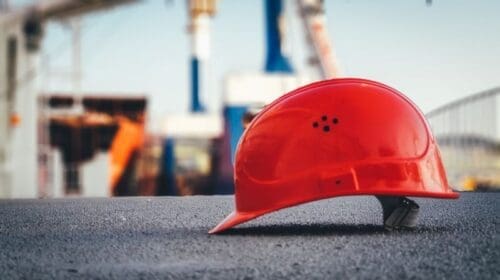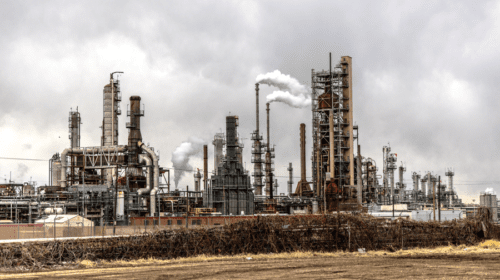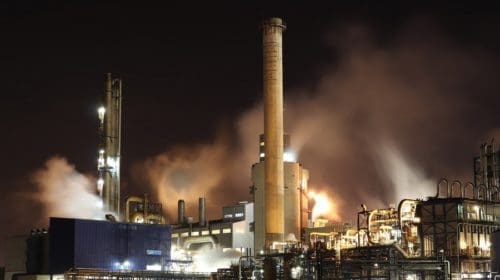Oilfield testing technology is essential for helping the oil and gas industry operate safely and productively. Some such efforts now use offshore robotics, particularly because using robots prevents humans from engaging in potentially dangerous tasks. Here are some eye-opening ways to automate aspects of oilfield tests and overall production.
Deploying Offshore Robotics for Safer Operations
Working as an offshore crew member can be dangerous, even when the respective individuals have appropriate training and years of experience. In fact, a crew member fatality pushed representatives from Swiss offshore drilling company Transocean to explore how robots might keep people safer.
Executives wanted to build a robotic riser system that would remove humans from the drill ship’s most dangerous area: the red zone. As of January 2023, Transocean had two such risers operating, and employees were preparing to begin working with a third.
However, interest in offshore robotics has persisted longer than people might realize. The European Commission-funded FPSO-INSPECT project is an excellent example since it ran from December 2004 to May 2007. The work centered on robots looking for cracks in floating production storage and offloading vessels within the oil industry.
A test robot had several sensors that allowed it to find fatigue cracks in the stiffeners between tanks and shells, corrosion in the shell plates, and problems with safety-critical welds. The setup also included a human-machine interface that read the sensor data. Another notable aspect of this robot was that it could swim. That characteristic makes it suitable for offshore robotics deployments and could reduce the number of inspections humans must do.
Automating Routine Tasks for Better Efficiency
Production statistics tend to rise when oil companies focus on making workflows more efficient. However, there’s no single way to achieve that goal. The best options vary depending on an organization’s needs. That’s why TotalEnergies has been working with several tech partners to develop an all-encompassing solution. More specifically, the parties want to create a robotic supervision system that can perform various tasks that operators currently handle.
Using offshore robots for such applications could reduce the personnel necessary to operate oil rigs safely. Moreover, having better oversight for land-based operations allows professionals to spot and react to problems faster, keeping efficiency levels high.
Another fascinating example of increased oilfield automation comes from an effort to focus on routine drilling operations. The resulting modular rig upgrade fits onto existing equipment, improving overall workflows for the companies using it. Executives involved in the matter said it was much less expensive to attach the automated product to existing rigs rather than purchasing new equipment.
The robotic equipment can also handle routine rig floor tasks, including creating drilling connections. However, executives stressed that the goal is not to replace humans. Instead, they want to give crew members new opportunities to capitalize on emerging technologies.

Pursuing Robotics to Capitalize on Oilfield Testing Technology
Most of the methods used for oilfield testing fall under the non-destructive testing (NDT) umbrella. It allows people to check pipeline serviceability without disrupting or harming the original infrastructure.
Carnegie Mellon University researchers built a machine for visual testing called Pipeline Explorer. It’s the first untethered and remotely controlled robot for inspecting live gas pipelines. It can also check thousands of feet of pipeline from a single excavation point, making each inspection effort maximally productive.
Other pipeline robots use radiographic technology to look for corrosion, weld seam damage and other anomalies that could make it dangerous to keep the pipeline operational. At least one robot on the market combines visual and radiographic inspection for a comprehensive approach.
Solutions also exist to check cased pipeline sections that formerly required costly excavations. These robots are nimble enough to squeeze into the areas between pipelines and casing, guided by an above-ground operator.
Why Use Robots for NDT in Oilfields?
When robots handle these NDT applications, people have more time to devote to the duties that still need a human touch. For example, people must conduct oilfield water quality tests to maintain environmental compliance, identify bacterial problems, check for corrosion and more. Tests also support the treatment of water produced during hydraulic fracturing operations. Splitting the duties between humans and robot, when applicable, can be an excellent way to prioritize safety and productivity.
Any robots deployed as part of an oilfield testing technology strategy must get certified for use in potentially explosive environments. That’s one of the characteristics associated with the ANYmal X made by ANYbotics. The machine can handle stairs and tight passages, making it operational with limited human intervention. Relatedly, inspections can happen more frequently, increasing the chances of people catching problems before they become catastrophic.
Another perk is these robots can help companies manage the high costs of bringing inspection specialists to offshore environments. Robots won’t remove the need for human input, but they could gather sufficient data to show a genuine problem exists. That information justifies getting a technician to the offshore site, significantly decreasing the chances of false alarms.
Steps to Applying Oilfield Testing Technology
These compelling examples show why humans may want high-tech help for some of their oilfield management tasks. Oilfield testing technology can support NDT needs and detect the problems that could prevent pipelines from operating smoothly. Plus, offshore robotics applications can enhance real-time monitoring without putting humans in dangerous positions that could risk their lives.
However, many of these technologies are not widely adopted yet. That often means decision makers must be pioneers rather than followers as they choose to implement robots or other high-tech solutions. One practical way to avoid hesitation is to commit to using the technology on a small scale first, and investing enough time and energy to try and do things right from the start.
Then, if it becomes clear that it makes good business sense to scale the technology to additional oil rigs, executives will be confident to make such approvals. Buying into innovations doesn’t necessarily mean doing it all at once. A slow and steady approach can pay off in the short and long term, supporting a company’s bottom line.
Relatedly, if a specific oilfield testing technology doesn’t immediately give the expected payoffs, that result might not mean failure. It often takes time – and trial and error – to tweak technological applications to make them cause optimal outcomes.
Transforming Oilfield Robotics For the Better
Technology has incredible capabilities to make oilfield operations smoother and safer. Humans can work in tandem with robotics to ensure optimal operations and increase an organization’s bottom line. While implementing oilfield testing technology may take time, the patience is worth the payoff.
Headline photo: ANYmal C legged robot offshore inspection petronas. Photos courtesy of ANYbotics.
Emily Newton is the Editor-in-Chief of Revolutionized, an online magazine discussing the latest industry innovations and trends.
Oil and gas operations are commonly found in remote locations far from company headquarters. Now, it's possible to monitor pump operations, collate and analyze seismic data, and track employees around the world from almost anywhere. Whether employees are in the office or in the field, the internet and related applications enable a greater multidirectional flow of information – and control – than ever before.












